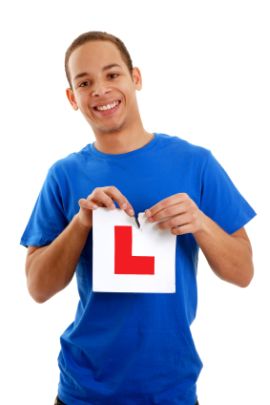How to help yourself stay safe whilst driving
It is a sad fact, but a fact nonetheless, that there are very rare occasions on which you can just get unlucky and be involved in an accident, whether minor or major, that you are powerful to do anything about. However, the vast majority of the time by being alert and aware of road conditions, you can keep yourself safe by reacting appropriately to hazards that could develop into potentially dangerous situations.
You should apply all the techniques you learnt whilst you were a learner, such as when and where to observe in the mirrors when you are about to drive off, whilst performing reversing methods, remembering how to do an emergency stop, remembering to look in the blind spot as appropriate and reacting to road signs when they instruct you to do something.
There are certain practices that will help to keep you safe. Firstly, remember to look sufficiently ahead. You may do this naturally but some people look too close at the road infront of them. One method to help you with this is too imagine that the car headlights on full beam go much further ahead and let you see much more than when they are dipped; similarly your eyes should be on 'full beam'.
Remember to use the mirrors as necessary. You will have been taught whilst learning to drive when and how to use the mirrors, and the times it is particularly important to use them. Remember that moving your eyes around whilst driving is important because when you are looking straight ahead you might miss important information from other directions that can be revealed for instance in the mirrors: a potential hazard could be behind you like a car zooming up behind you rather than ahead of you in the road.
You should also actively be alert and looking out for potential hazards; being forewarned is forearmed as they say meaning that if you know of something in advance then you are better equipped to deal with it. If you see a vehicle coming up particularly quickly from a road that feeds into your road, then you can be alert that it might pull out right in front of you or potentially you might get there at a similar time, so you are primed to react accordingly should anything untoward happen.
Next, be sure to remember your stopping distances and therefore that you leave sufficient space in front of you to react. Whilst many drivers don't seem too aware of this and drive far too close to other vehicles, that is no reason to do the same.
Finally, ensure that you signal correctly. There are many occasions whereby you would think the rules of the road are random: look at a roundabout and you'll see vehicles performing the same manouevre performing a wide range of different signals with some indicating, some not, some indicating just as they're about to leave the exit whilst others do even stranger things. But the rules are simple: stick to the correct rules for signalling for safer driving.
Related Articles...
The risk of accidents - some statistics
No-one wants to think that they will be involved in an accident, but being aware that an accident could happen to you and the statistics is important. Accidents happen to ordinary people, so anyone...
Medical rules and driving
There are a wide range of conditions that you can hold and still be a safe driver. However there are certain conditions that will may impact on your ability to be a safe driver and therefore could...
Vehicle's registration certificate
A vehicle has a document called a V5C, and this is the registration certificate for the vehicle. However this document by itself is not alone proof that the person selling you a vehicle actually...
How to pass the hazard perception test
First you need to understand just what a hazard is. Broadly, it is any element that can introduce risk into the driving scenario.
There are various different types of hazard that are...
Things to look for when checking tyre condition
The tyres are extremely important elements of the car, yet many people do not think much about them when checking that their vehicle is roadworthy.
However, in addition to checking the amount...
What causes accidents: overtaking
When you overtake a vehicle, there are often many things to consider.
First of all you need to ensure that it is, as far as you are aware, safe to do so. Therefore don't overtake close to...
Your ignition warning light
When you turn on the electrical circuits in your car, then the ignition warning light will come on: make sure that this does indeed happen.
Once the engine itself is started, then the ignition...
Risk factors when driving: snow and ice
When the snow is falling, there is one big problem - it is hard to see far infront. So like fog, reduced visibility is the problem with snow. And when there is heavy snowfall it can be very hard...
Your car and the lights on it
We are all used to seeing cars in the dark, and also seeing their indicators in the day to communicate to other car drivers. But what must you ensure with regard to the lighting of your...
Reversing Exercises in the driving test
There are three reversing exercises that you could be tested on in the driving practical test.
You will be asked to perform two out of these three so that the person undertaking your test (the...
Back to home page of driving theory test questions

